What is the Most Common Type of Hamster?
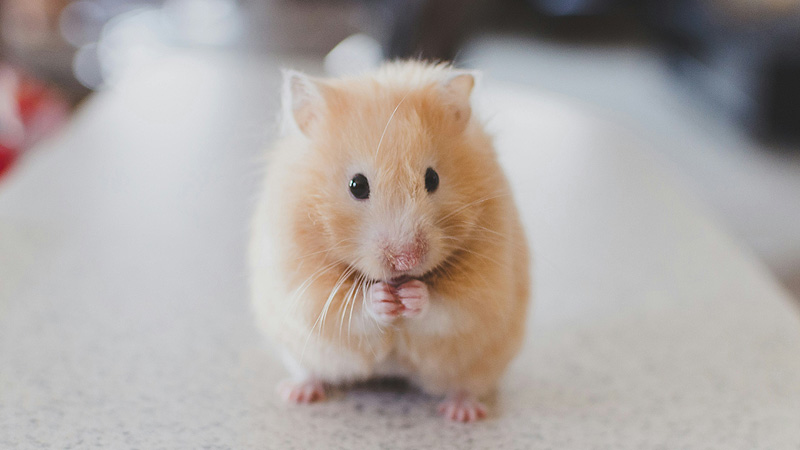
Photo by Ricky Kharawala on Unsplash
Hamsters are a popular choice for small pets due to their adorable appearance and relatively low maintenance requirements. With their fluffy bodies, twitchy noses, and tiny paws, these little rodents have captured the hearts of many pet owners. But what is the most common type of hamster?
In this article, we'll explore the five most popular hamster species kept as pets, highlighting their unique characteristics and traits.
Introduction to Hamsters
Before we dive into the various hamster species, let's take a moment to appreciate the uniqueness and appeal of these small creatures. Hamsters belong to the subfamily Cricetinae and are rodents native to parts of Europe and Asia. They are typically characterized by their short tails, round bodies, and cheek pouches used for storing food.
Hamsters are known for their robust breeding abilities, and they have been domesticated for many years now. People keep them as pets due to their compact size, ease of care, and charming personalities. These small animals are also relatively low maintenance, making them an ideal choice for individuals with limited space or busy schedules.
Different Hamster Species
There are several different species of hamsters, each with its own unique characteristics and traits. The most common types of hamsters kept as pets include:
1. Syrian Hamsters (Mesocricetus auratus)
Syrian hamsters, also known as golden hamsters, are arguably the most popular type of hamster among pet owners. They are native to the arid regions of Syria and are known for their solitary nature. Syrian hamsters are larger compared to other hamster species, typically ranging from 5 to 7 inches in length.
These hamsters come in various color variations, such as golden, brown, black, white, and even multi-colored combinations. Their personalities also vary, with some being docile and friendly, while others may display territorial behavior.
Syrian hamsters are nocturnal creatures, meaning they are most active during the night and may sleep during the day. They require a spacious cage with plenty of bedding for burrowing, a running wheel for exercise, and toys for mental stimulation. Syrian hamsters have specific dietary needs that include commercial hamster food, fresh fruits, vegetables, and occasional treats.
Dwarf Hamsters
Dwarf hamsters are a group of small hamster species that include the Roborovski, Winter White, Campbell's, and Chinese hamsters. These hamsters are all small in size and have their unique characteristics.
2. Roborovski Hamsters (Phodopus roborovskii)
Roborovski hamsters, also called Robos, are the smallest species of hamsters commonly kept as pets. They are native to the deserts of Central Asia and are known for their active and curious nature.
Robos are highly social and are best kept in same-sex pairs or small groups. They are diurnal creatures, meaning they are most active during the day and may have bursts of energy throughout the day. These hamsters are energetic and agile climbers, requiring a cage with multiple levels and platforms for exercise and exploration.
Roborovski hamsters need a well-ventilated cage with solid flooring to prevent injuries. They enjoy running in exercise balls or wheels and engaging in playful activities. The diet of Roborovski hamsters consists of commercial hamster food, fresh fruits, vegetables, and occasional treats.
3. Winter White Russian Hamsters (Phodopus sungorus)
Winter White Russian hamsters, also known as Djungarian hamsters, are small and docile species of hamsters native to Russia and Kazakhstan. They have a thick coat of fur that changes color with the seasons, turning white in winter and gray-brown in summer.
These hamsters are sociable and thrive in same-sex pairs or small groups. Winter Whites are energetic and inquisitive creatures that enjoy exploring their surroundings. They are active throughout the day and night, requiring plenty of toys and activities to keep them entertained.
Dwarf Winter White Russian hamsters need a secure and escape-proof cage with nesting material for burrowing. They benefit from a varied diet that includes commercial hamster food, fresh fruits, vegetables, and occasional protein sources.
4. Campbell's Russian Hamsters (Phodopus campbelli)
Campbell's Russian hamsters, also known as Campbell's hamsters, are another small species of hamster originating from the steppes of Central Asia. They have a shorter coat of fur compared to Winter White Russian hamsters and come in various colors, such as gray, brown, and black.
These hamsters are social animals that can be kept in same-sex pairs or small groups. They are active and alert creatures that enjoy exploring and interacting with their environment. Campbell's hamsters are active throughout the day and night, requiring mental stimulation and exercise to prevent boredom.
Dwarf Campbell's Russian hamsters need a well-ventilated cage with hiding spots and nesting material. They enjoy running on exercise wheels and playing with toys that stimulate their natural instincts. Their diet consists of commercial hamster food, fresh fruits, vegetables, and occasional protein sources.
5. Chinese Hamsters (Cricetulus griseus)
Chinese hamsters are a unique species of hamster that are slightly larger than Dwarf hamsters but smaller than Syrian hamsters. They have a distinctive long and slender body with a prehensile tail that they use for balance. Chinese hamsters have a gray-brown fur coloration.
These hamsters are social animals that can be kept in same-sex pairs or small groups. They are active and agile climbers who enjoy exploring their environment. Chinese hamsters are active throughout the day and night, requiring ample space for exercise and mental stimulation.
Chinese hamsters need a secure cage with multiple levels and climbing opportunities. They enjoy running in exercise wheels and engaging in playful activities. The diet of Chinese hamsters includes commercial hamster food, fresh fruits, vegetables, and occasional protein sources.
Determining the Most Common Type of Hamster
While all the aforementioned hamster species are popular among owners, determining the most common type can be challenging. The popularity of hamster species may vary depending on geographical location, individual preferences, and availability.
However, considering the widespread availability and widespread ownership, Syrian hamsters, or golden hamsters, emerge as the most commonly kept hamster species. These hamsters have been domesticated for many years and are widely recognized for their adorable appearance and enjoyable companionship.
Syrian hamsters are often the first choice for individuals venturing into hamster ownership. Their larger size, variety of colorations, and generally docile nature make them appealing to both children and adults. They also have a longer lifespan compared to some dwarf hamster species, living up to 2-4 years on average.
Conclusion
In conclusion, hamsters are delightful pets that bring joy and companionship to many homes. Among the various hamster species, the Syrian hamster, or golden hamster, is the most common type kept as a pet. However, it is essential to remember that each hamster species offers its own unique characteristics and care requirements.
Whether you opt for a Syrian hamster or one of the dwarf hamster species like the Roborovski, Winter White Russian, Campbell's, or Chinese hamster, it is crucial to provide them with a suitable environment, balanced diet, and regular social interaction. Understanding the specific needs of the hamster species you choose will help create a happy and fulfilling life for your tiny, furry companion.
You May Also Like
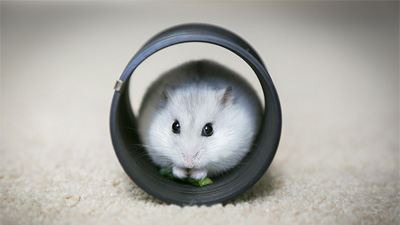 Pet HamsterIs a Hamster a Type of Rat? Debunking the Myth
Pet HamsterIs a Hamster a Type of Rat? Debunking the Myth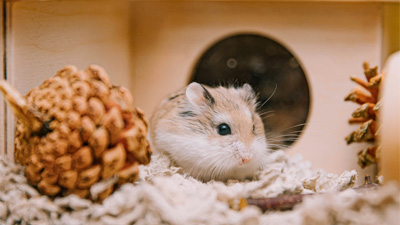 Pet HamsterHamsters vs. Mice: What Is the Difference?
Pet HamsterHamsters vs. Mice: What Is the Difference?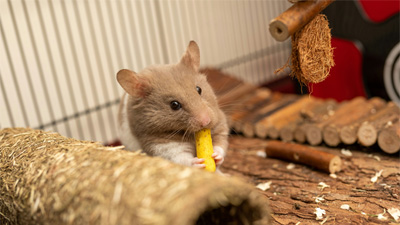 Pet HamsterCan Hamsters Spread Diseases to Humans?
Pet HamsterCan Hamsters Spread Diseases to Humans?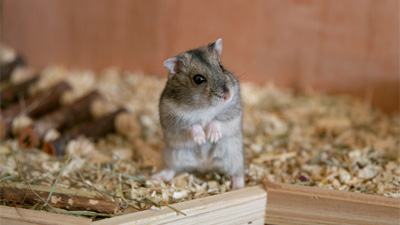 Pet HamsterCan a Kid Be Allergic to a Hamster?
Pet HamsterCan a Kid Be Allergic to a Hamster?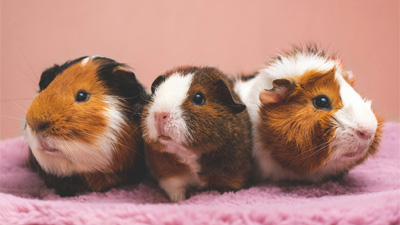 Pet HamsterIs It Better to Have 2 Hamsters or 1?
Pet HamsterIs It Better to Have 2 Hamsters or 1?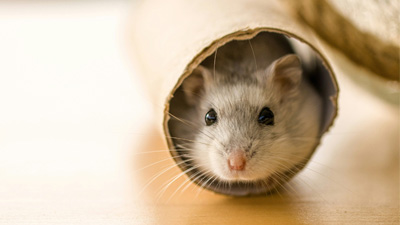 Pet RatsExploring the 7 Different Types of Pet Rats
Pet RatsExploring the 7 Different Types of Pet Rats